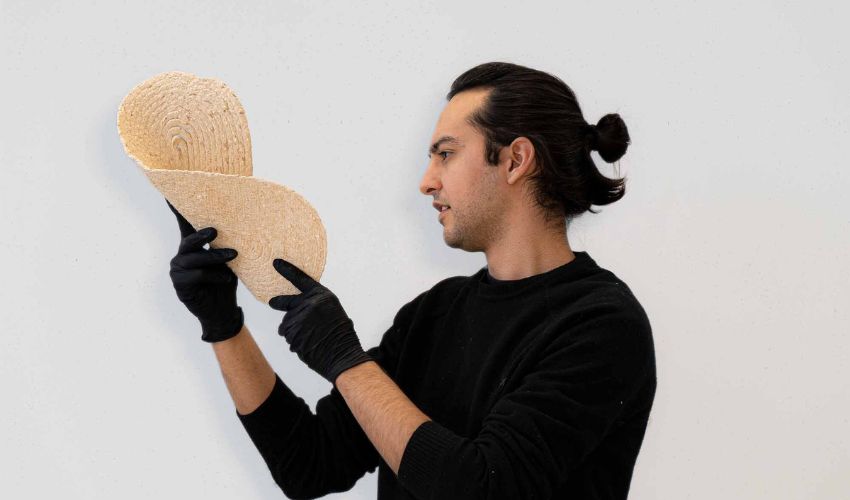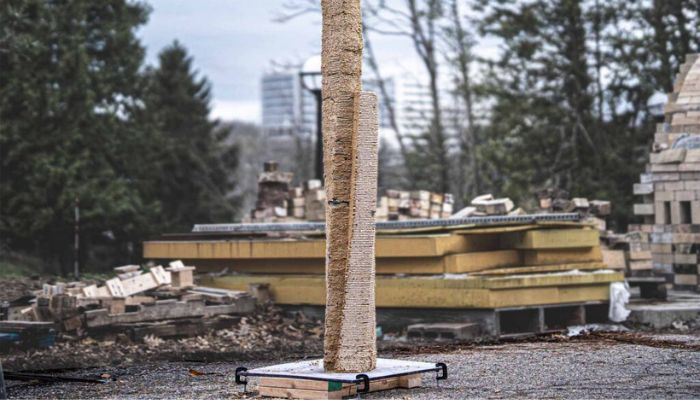3D Printed Sawdust Formwork Could Cut Construction Waste

As 3D printing continues to evolve, so too have the efforts to use the technology to build in an environmentally friendly way. Concepts like upcycling, using natural materials and even using wood as a 3D printable material have already been implemented, but researchers have taken another step forward by combining all three of these elements into a new project. At the University of Michigan, a team known as BioMatters has created a solution that uses 3D printed, upcycled sawdust as an alternative to concrete formworks in the construction industry. Sawdust is popular in the sector, however much of the waste is dumped into landfills or burnt. The goal of this new project is to turn sawdust into a viable construction solution that is reusable, responsible, and inexpensive.
As mentioned, the readily available nature of sawdust makes it a perfect resource to use, but it is a hazard to environmental and personal health if left untouched. Adding to that, millions of tons of sawdust are generated every year as a byproduct of cutting down trees, lumber, and construction. In the United States alone, over 3 million tons of sawdust are sent to landfills annually. “When the sawdust decomposes, it is producing fatty acids, lignin, which causes toxicity in water. And once it starts contaminating water, it has its effects on smaller wildlife, microbes and a broad range of organisms. And with sawdust being extremely flammable, its potential contribution to wildfires is very high,” explains BioMatters team and Digital Architecture Research & Technology (DART) Laboratory researcher, Muhamad Dayyem Khan, “so rather than burning it up and generating more CO2 emissions, it is so much better that we make it into a material that is actually capable of being used again and again”.

The 3D printed formwork could make use of waste lumber and sawdust left at construction sites (photo credits: Tharanesh Varadharajan, Zachary Keller, Muhammad Dayyem Khan)
The team’s solution addresses formworks in the construction industry, which are molds that are used to cast concrete on construction sites. Formworks currently utilize various materials such as plastics, metals or timber, and can make up to 40% of concrete construction expenses. In such an environment where sawdust is already plentiful, the hope is that this byproduct can continue to create a 3D printed alternative to traditional practices that can help reduce waste and resource consumption. In addition to sawdust, they mix their material with biopolymers to allow the mixture to be extruded via a 3D printer. Unlike raw sawdust, the material is entirely biodegradable and can be reused or recycled.
With their 3D printed sawdust formworks, the team can print sets of on-demand concrete casts to suit construction needs. As the forms are filled, the two materials work in tandem as the concrete takes shape in the hollow sawdust form while stabilizing the wood from the inside to prevent deformation during the curing process. After the concrete has hardened, the formwork can be removed and completely recycled. While still undergoing further tests in the university labs, the steps being taken by the DART research team are showcasing the possibilities that lie in store; 3D printing as a more environmentally friendly and responsible way to build the future.
What do you think of upcycling in construction? Let us know in a comment below or on our LinkedIn, Facebook, and Twitter pages! Don’t forget to sign up for our free weekly Newsletter here, the latest 3D printing news straight to your inbox! You can also find all our videos on our YouTube channel.
*Cover Photo Credits: Tharanesh Varadharajan, Zachary Keller, Muhammad Dayyem Khan






